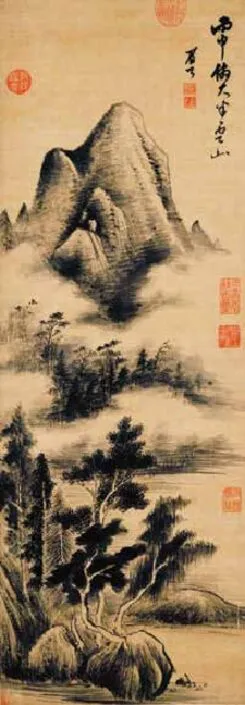ALTERNATIVE DREAMS
ALTERNATIVE DREAMS

Horsemouth Cliff by Fu Shan, 1659
Stepping from the scorching Los Angles sun into the cool, austere Resnick Pavilion in the Los Angeles County Museum of Art (LACMA), you find yourself transported back to 17th-century China, experiencing a historical vertigo induced by the finest collection of Chinese paintings in the United States.
On view from August 7 to December 4, 2016, “Alternative Dreams: 17th-Century Chinese Paintings from the Tsao Family Collection”, is curated by Stephen Little in memory of Bay Area collector and dealer Jung Ying Tsao (曹仲英). The exhibit presents over 120 paintings from 80 artists, scholars, and Buddhist monks of the late Ming and early Qing dynasties. Among them are 15 pieces from Dong Qichang (董其昌), perhaps the most dynamic painter in Chinese art history.
The Manchu invasion and the overthrow of the Ming Dynasty made the 17th century one of the most turbulent periods in Chinese history. The inevitable retreat from politics and the longing to commune with nature had been a shared language among Chinese literati for centuries; the urge to abandon political turmoil for individual subjectivity was especially acute during this time. An expat himself, Tsao’s personal history was entangled with the Chinese Communist Revolution, an experience that shaped Tsao as an artistic connoisseur who was more concerned with artworks in times of artistic change than with history itself.
On closer examination, the large body of works on display are emulating earlier artists. Dong was renowned for his reinterpretation of the earlier Chinese paintings. Amid the disorientation and misery of losing his country and family members, Dong retraced existing forms of classical paintings. And as a remarkably innovative artist, he carried on the lineage of literati art that would fundamentally influence Chinese art over the coming five centuries.
One artist whose work shows little resemblance to Dong’s is Su Shi (苏轼), a great poet and calligrapher in the 11th century. Su’s work reflects a lost artistic tradition where painters and calligraphers humbly admired their favorite artists of the past and engaged in an aesthetic tête-à-tête across time and space—a conversation that is profoundly touching.
As Tsao diligently built up his encyclopedic 17th century collection, history folds back to the point where he and Dong stand parallel, combating their collective fate of displacement by simultaneously looking back and forward. They are both grounded in history. - LI YANTING (李妍婷)

Flowers and Birds by Fang Hengxian,1674

Cloudy Mountains by Chen Jiru, 1596

A fan painting by Wang Shimin, 1648

